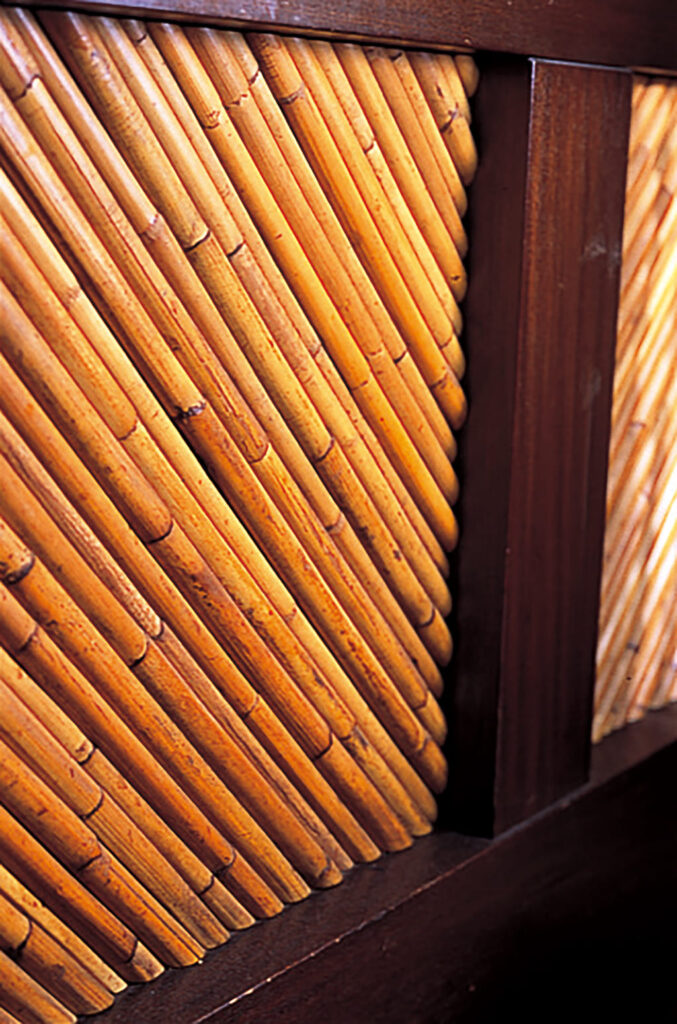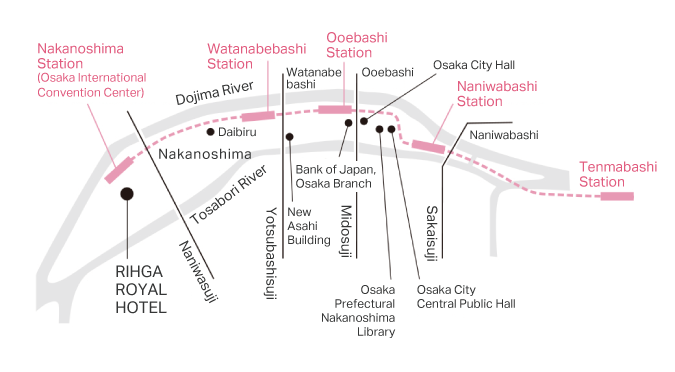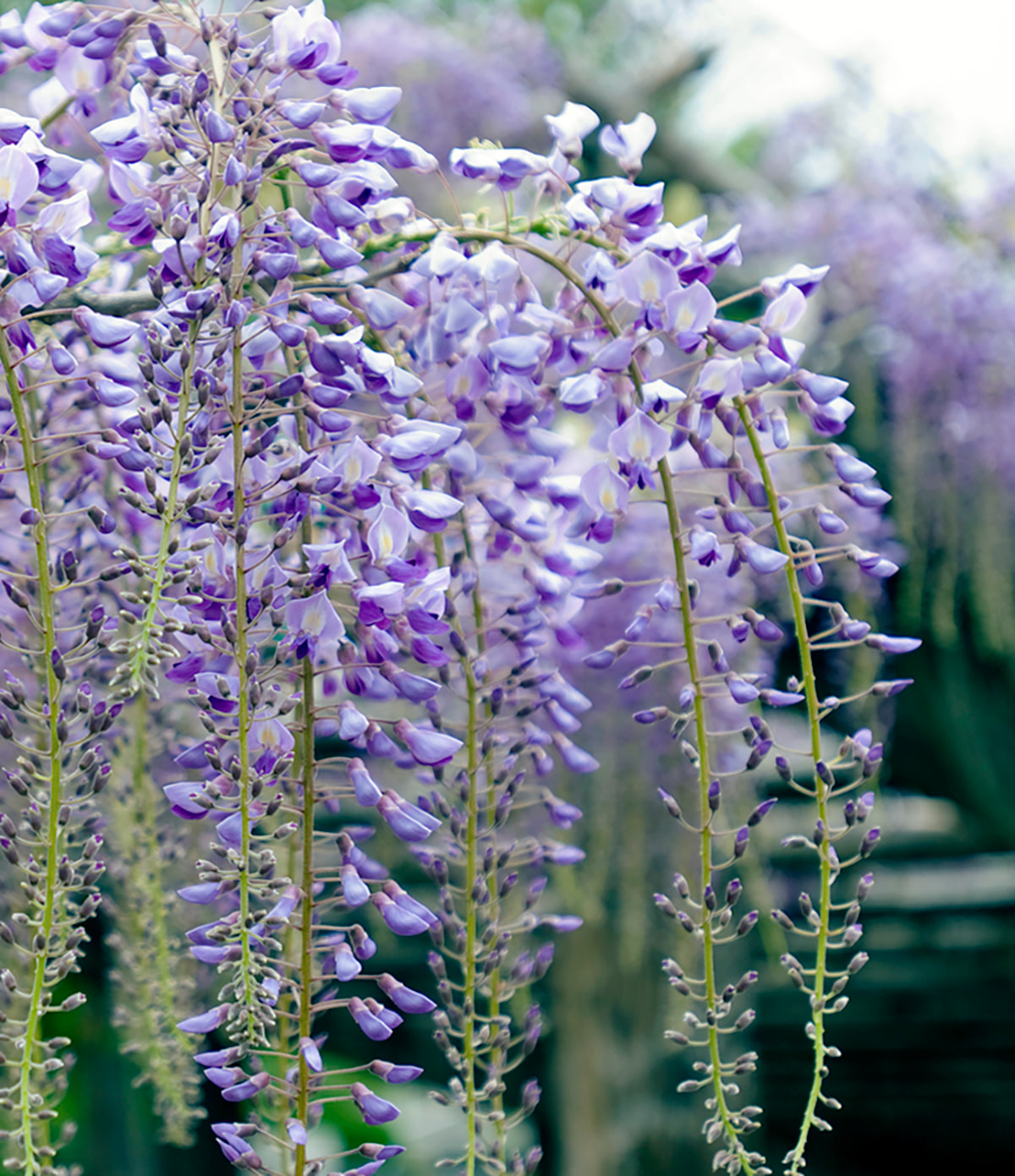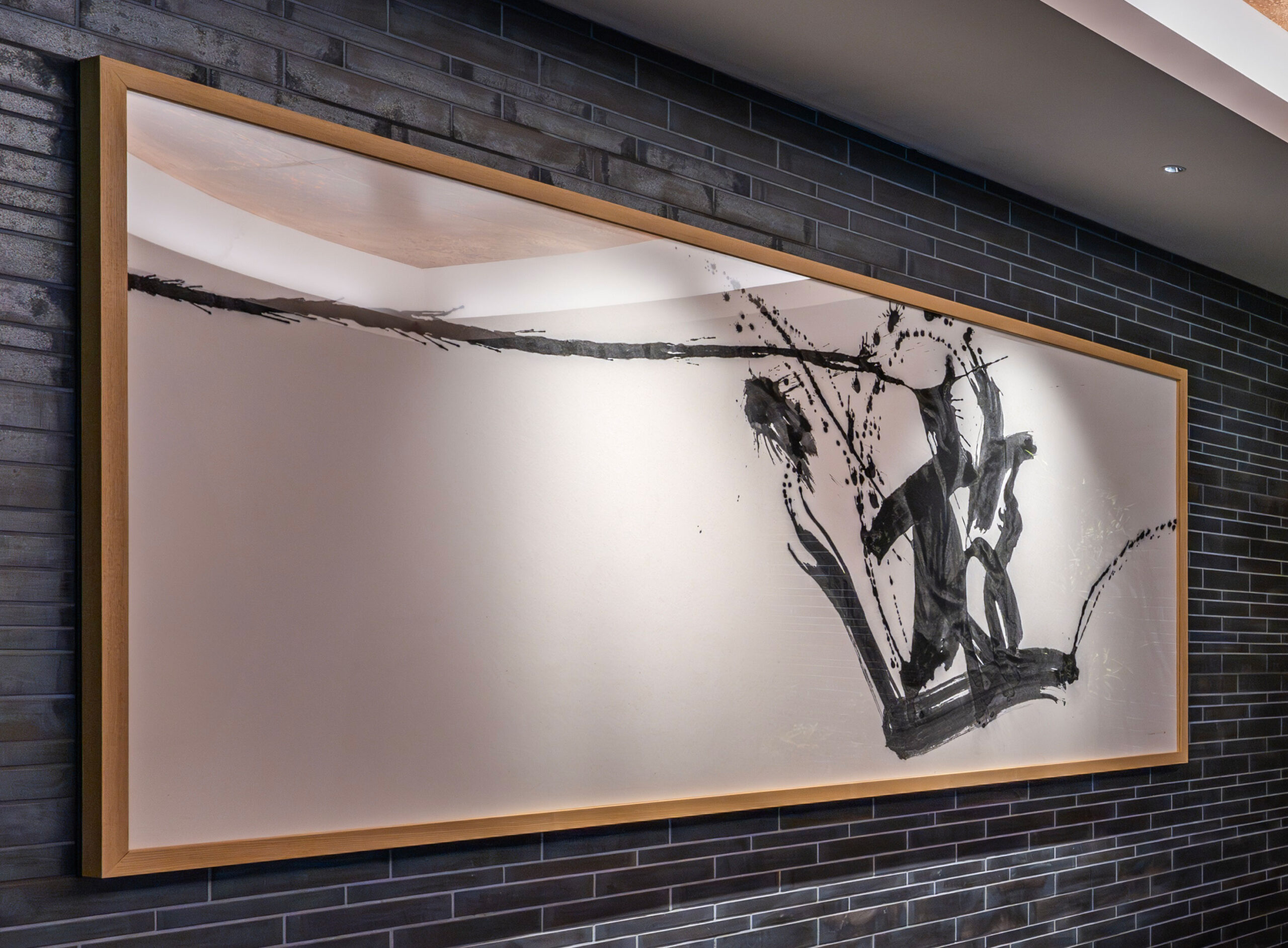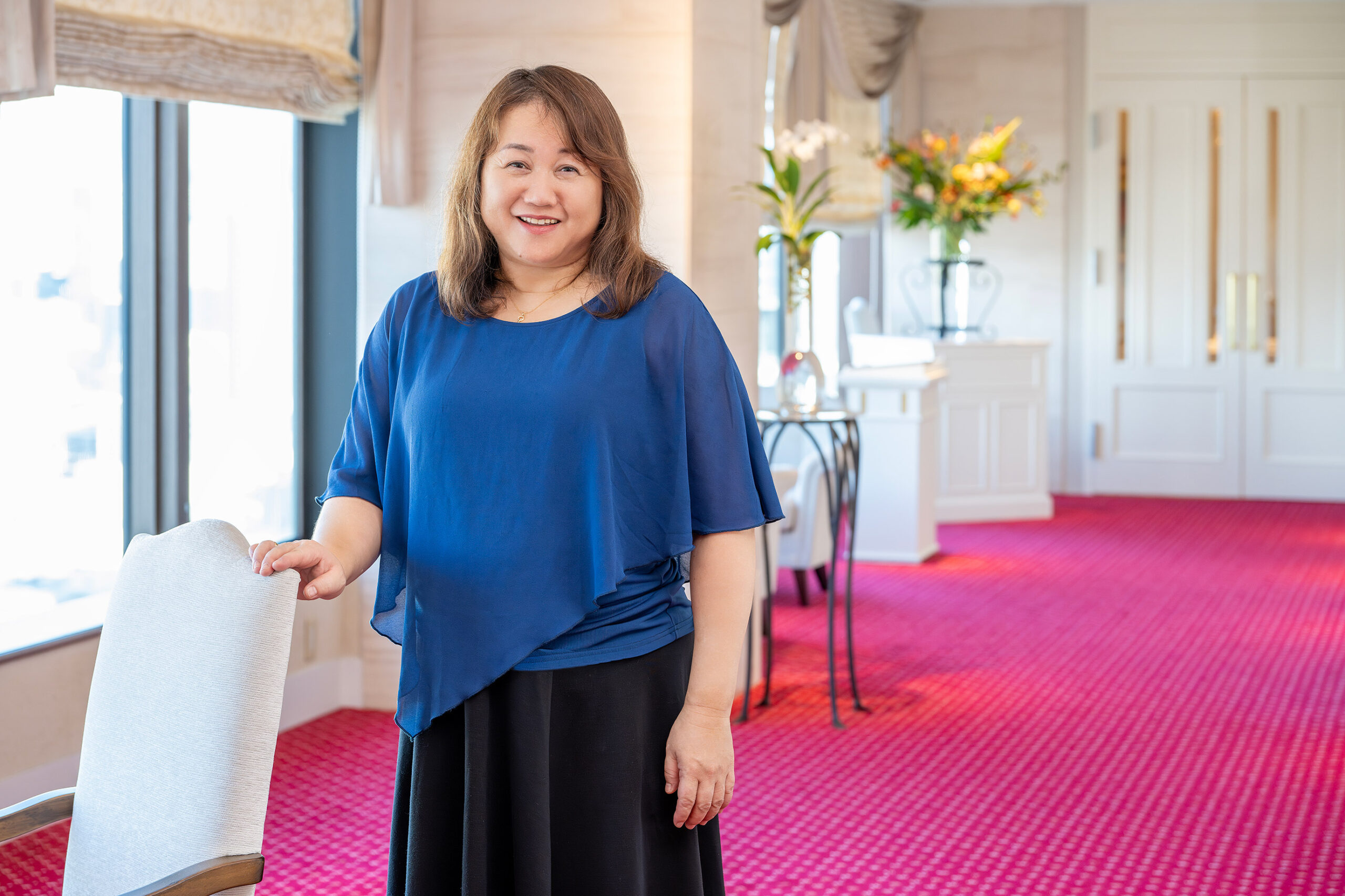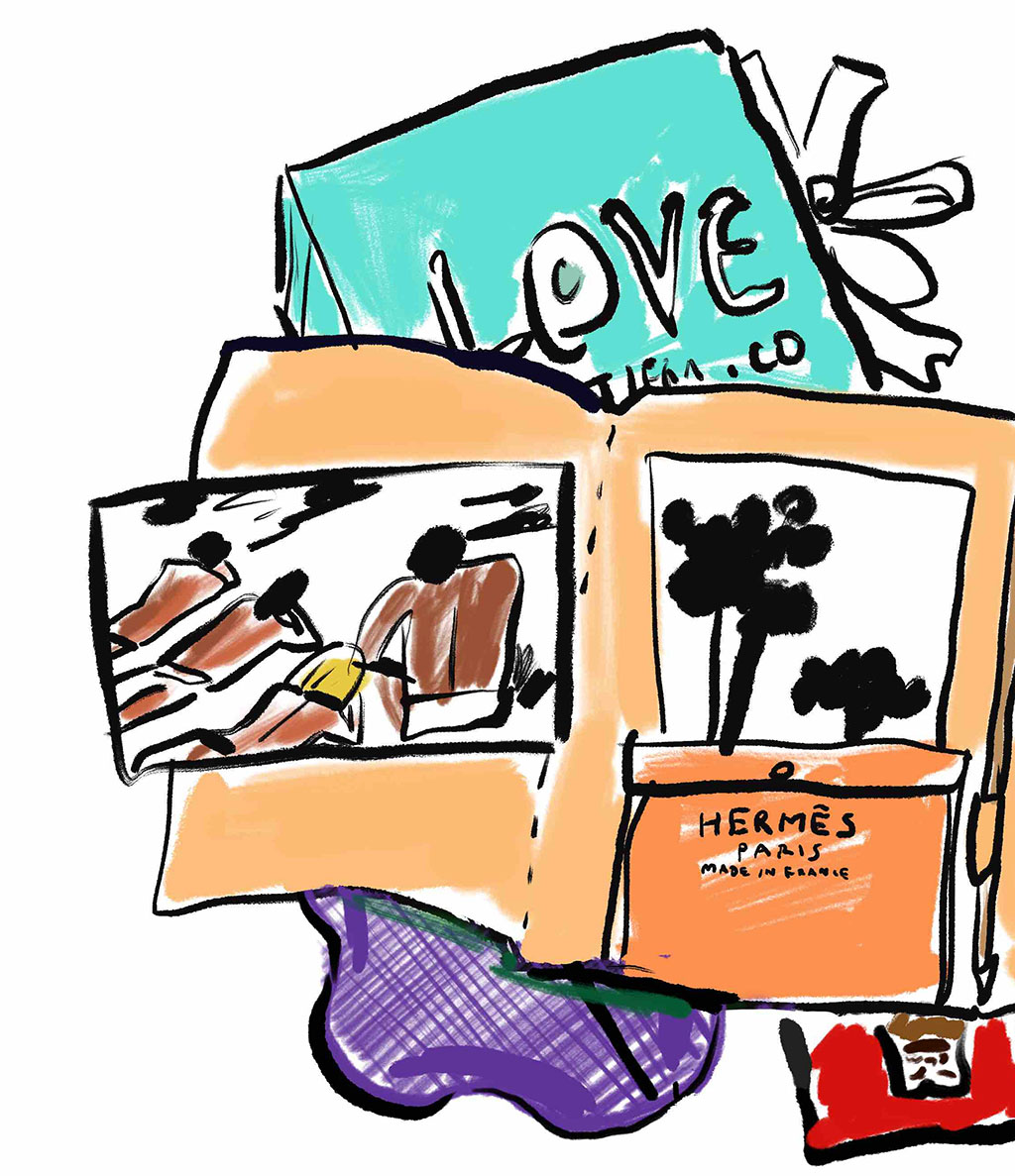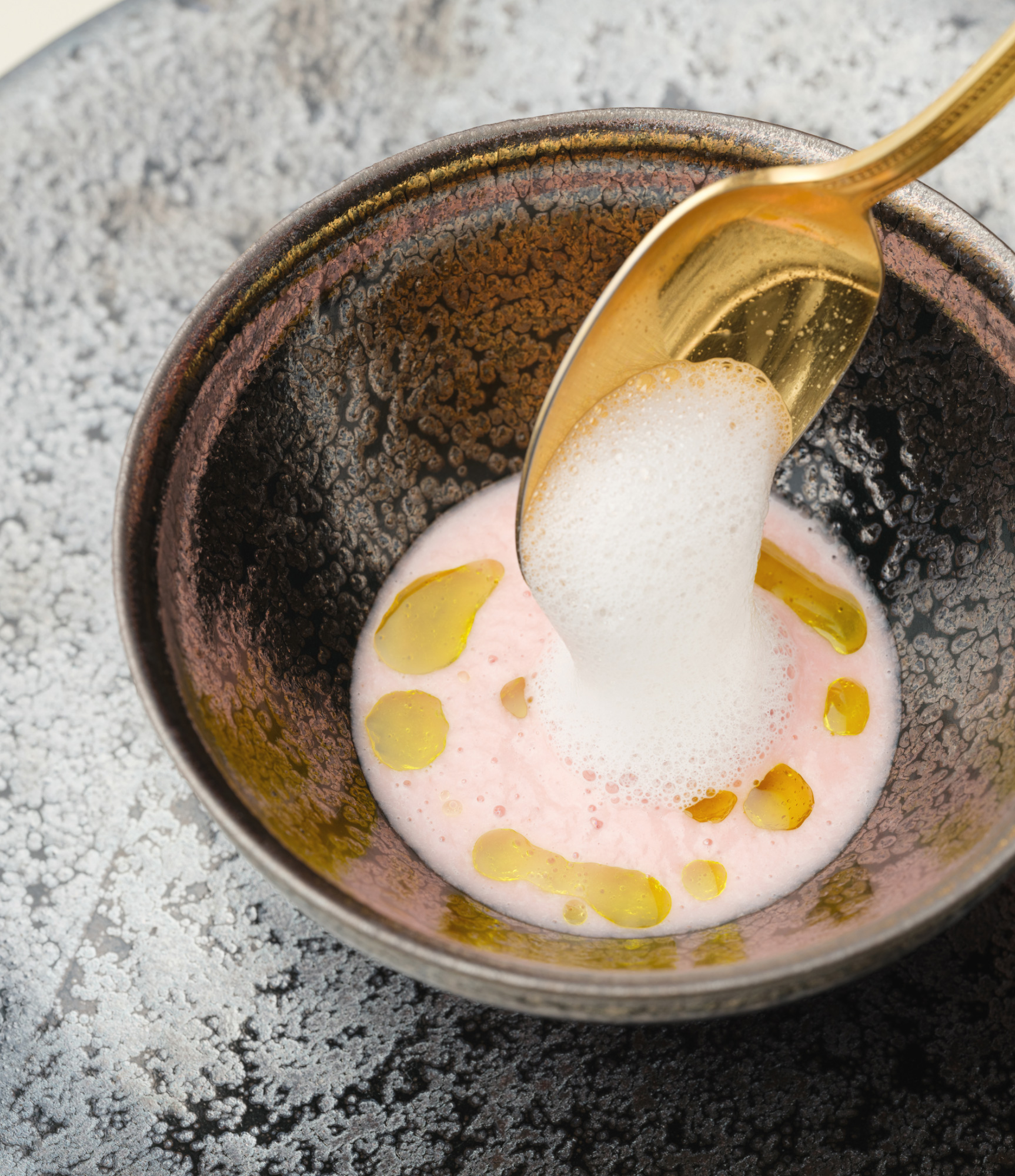
The “Good Design” along the Nakanoshima Line
This article was originally published in the November/December 2008 issue of The ROYAL. All products, services and prices are subject to change.
RIHGA Royal Hotel Osaka is now directly connected to Nakanoshima Station. Notable architecture and beautiful design…Let’s travel along the charming Nakanoshima Line.
The “Keihan Nakanoshima Line” opened on October 19, 2008. The easternmost station of the Nakanoshima Line, “Keihan Temmabashi Station,” is linked to the subway Tanimachi Line, and the westernmost station, “Nakanoshima Station,” is directly connected to the RIHGA Royal Hotel Osaka. The rest of the stations include “Naniwabashi Station,” “Oebashi Station,” and “Watanabebashi Station.”
What’s worthy of a special mention about the Nakanoshima Line is that no matter which station you are at, you will be greeted with a plethora of modern architecture once you step above ground. The notable buildings, such as the Osaka City Central Public Hall and the Osaka Prefectural Nakanoshima Library, were mainly built between the Meiji and early Showa periods. Furthermore, the bridges at the foot of each station are also classical and superbly designed.
As the name suggests, this new line traverses Nakanoshima. It can be characterized by its modern architecture that symbolizes “Dai-Osaka,” and it also runs along the rivers that represent Osaka, the “City of Water.” The RIHGA Royal Hotel Osaka, which opened at the current site in 1965, is also a beautiful building with a classical look that blends with such luxurious scenery.
Let’s begin our journey by stopping by the RIHGA Royal Hotel Osaka’s well-designed café next to Nakanoshima Station.
1. The Beauty of Tradition
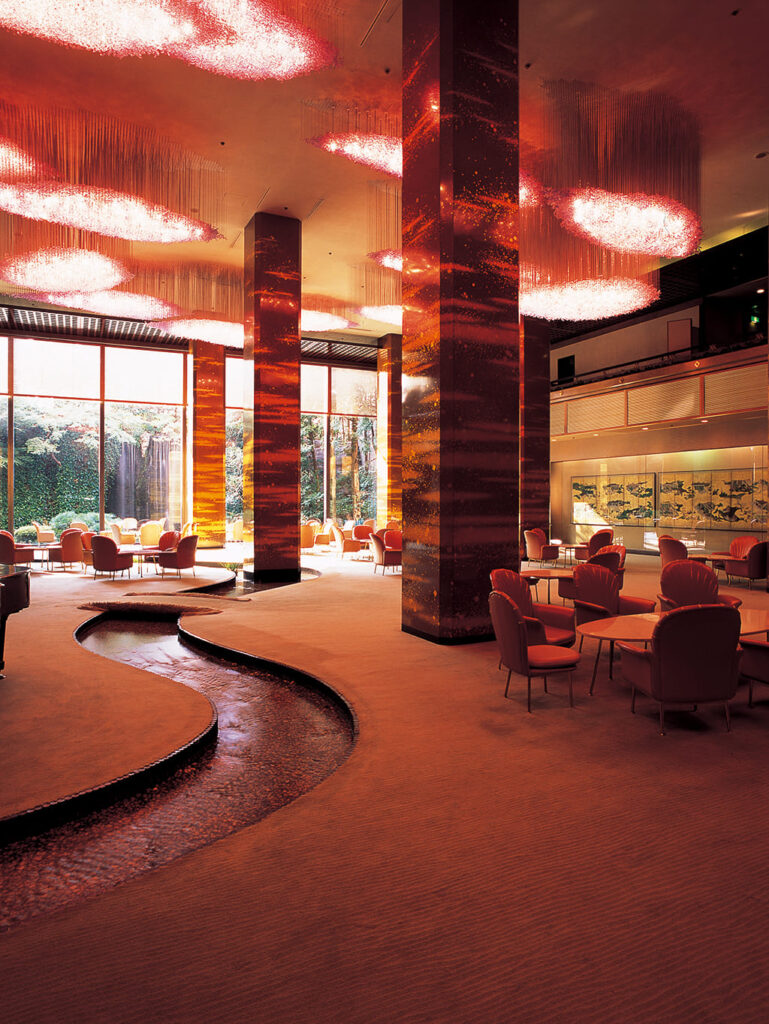
●Nakanoshima Station
(Osaka International Convention Center)
RIHGA Royal Hotel Osaka 1st Floor
Main Lounge
The “Shiun” (purple clouds) Chandelier
The chandelier in the lounge, looking graceful as the clouds in the sky, was designed by the sculptor Tada Minami. It is made up of 250,000 small rods of crystal glass, each about 10 cm long, strung on 45,000 steel wires that cover the bulbs and form 21 “Shiun.” It has a different beauty when viewed from the corridor in the banquet lounge on the second floor.
The Gold Maki-e Pillars
Agata Jiro created these soaring, luxurious pillars with golden clouds designed by Yoshida Isoya. 8.2-meter-long, jointless lacquered copper plates are covered with gold leaf and dust and polished with transparent lacquer ten times. Depending on the lighting, these pillars show you a different elegance.
The Tale of Genji
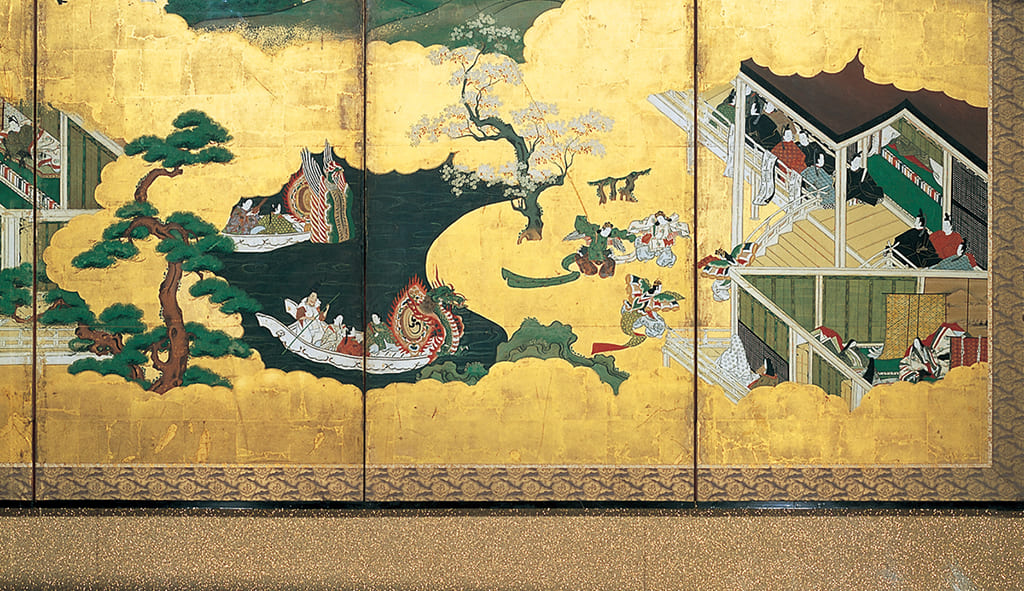
The Water Corridor
“The cafe with a stream flowing through it” is referred to as that because of this “water corridor.” This graceful “water corridor” is inspired by “Kyokusui-no-en” and flows into the waterfall in the Japanese outdoor garden. After Chuguji Temple in Nara, this is Yoshida Isoya’s second work in which he included water in his architectural design. It feels like time has stopped when you’re here.
The Waterfall and Japanese Garden
The Japanese garden, located at the front of the main lounge, has a forest of Japanese Torreya on the right and bamboo thickets on the left. In contrast to this “still” space, which reminds you of deep in the mountains, there is a “dynamic” space with a two-leveled 10-meter-high waterfall splashing in a pond. Such a contrast of nature will make you forget that you are in the middle of Nakanoshima.
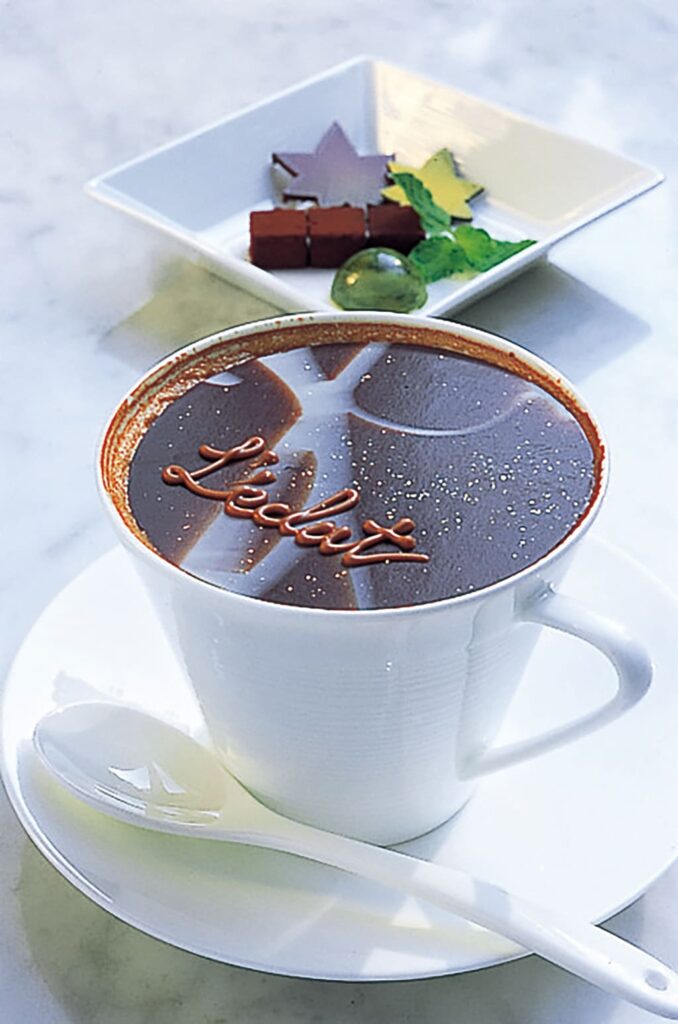
Phone: +81(0) 6-6441-0956
Luxurious architecture of “Dai-Osaka”
Osaka was called the “kitchen of the nation” during the Edo period. Nakanoshima, located between the Dojima and Tosabori Rivers, was a town of marine transportation that supported the “kitchen of the nation.”
After the Meiji period, when the feudal Kurayashiki-warehouses had disappeared, government offices and cultural facilities were built on Nakanoshima, modeled after the Île de la Cité in Paris.
In 1903, the Bank of Japan Osaka branch was built, followed by the Osaka Prefectural Nakanoshima Library in 1904. Osaka City Central Public Hall followed this in 1918, and in 1921 the Osaka City Hall was completed. (it was rebuilt in 1982 and again in 1986). In 1925, the Daibiru Building was built with the cutting-edge construction technology of the time, and more office buildings like this started to fill the riverbanks of Nakanoshima one after another, which made Nakanoshima known as an advanced area in Osaka.
Finally, in 1935, the Hotel New Osaka, the predecessor of the RIHGA Royal Hotel, was completed.
In front of the “Keihan Nakanoshima Line” stations is modern architecture that has remained from this era. You can still visit some of them, including the Osaka Prefectural Nakanoshima Library, the Daibiru Building, and the RIHGA Royal Hotel Osaka. The interior of these opulent buildings is even more gorgeous, and it’s worth visiting.
2. Entrance Hall
●Watanabebashi Station
Daibiru Building
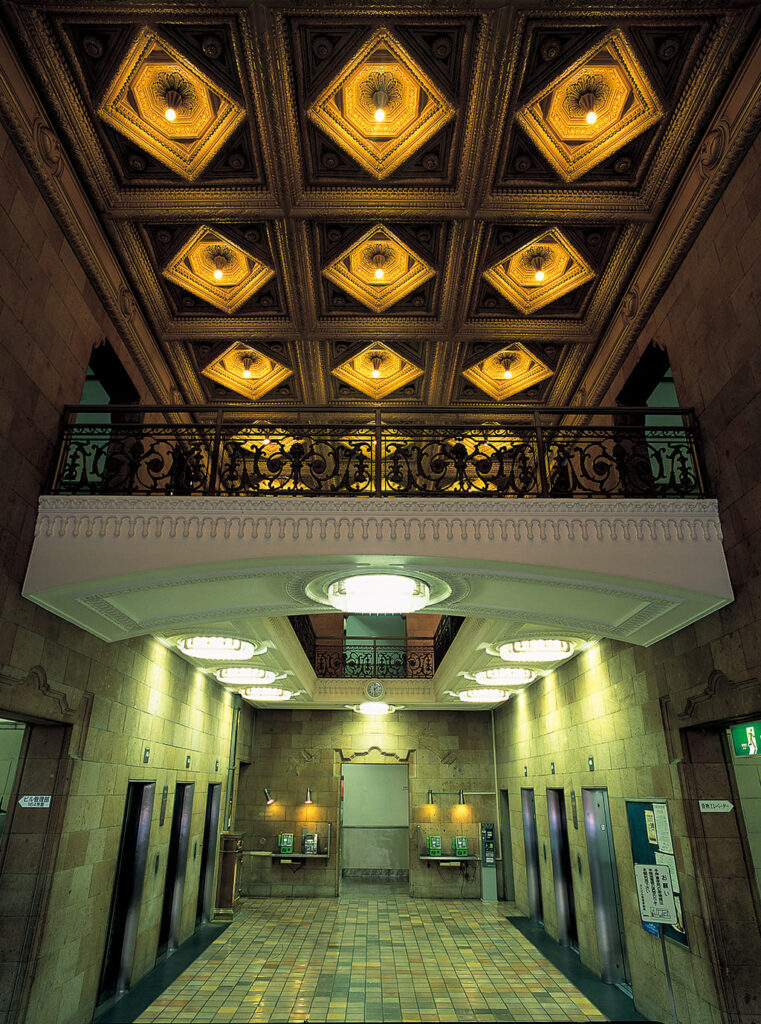
3. The Central Hall
●Naniwabashi Station
Osaka Prefectural Nakanoshima Library
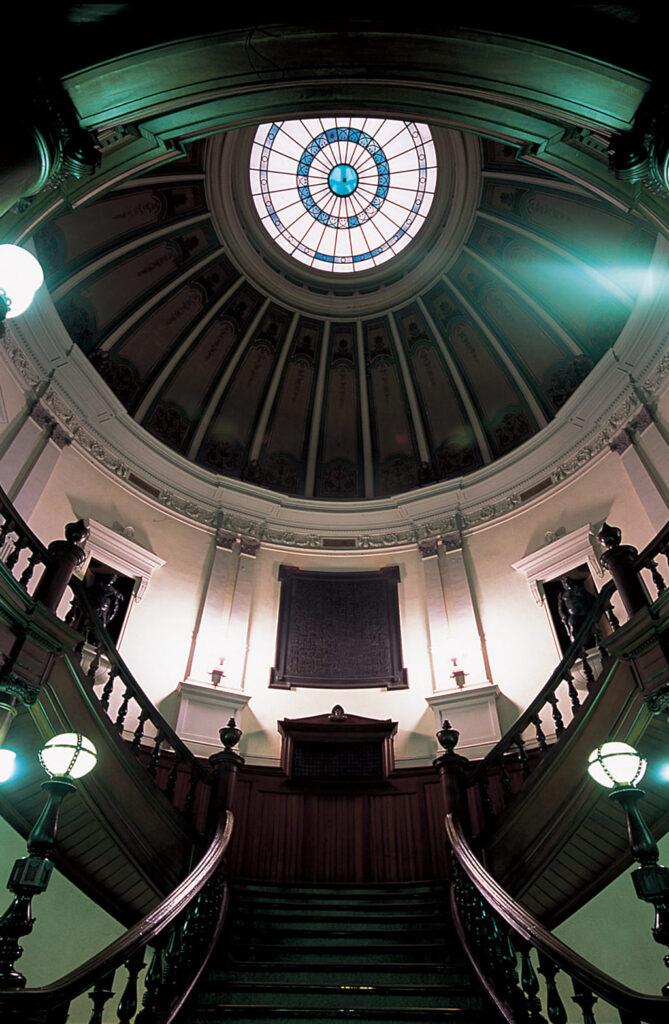
Opening Hours:
Monday-Friday: 9:00~20:00
Saturday: 9:00~17:00
Closed:
Sundays, national holidays, and second Thursdays (If Thursday is a national holiday, the library will also be closed on the day before Thursday.)
Phone: +81(0) 6-6203-0474 (representative)
4. The Elevators
●Nakanoshima Station
(Osaka International Convention Center)
RIHGA Royal Hotel Osaka
Current West Wing

5. The Two “Miotsukushi” (Waterway Sign)
“Miotsukushi” is a sign that indicates waterways. The Osaka city emblem, made in 1894, was modeled after this “Miotsukushi,” and it symbolizes Osaka, the “City of Water.”
Have you found “Miotsukushi” anywhere? You may have seen it on a bridge or in a restaurant in the RIHGA Royal Hotel Osaka.
●Naniwabashi Station
The pediment of the Naniwabashi Bridge
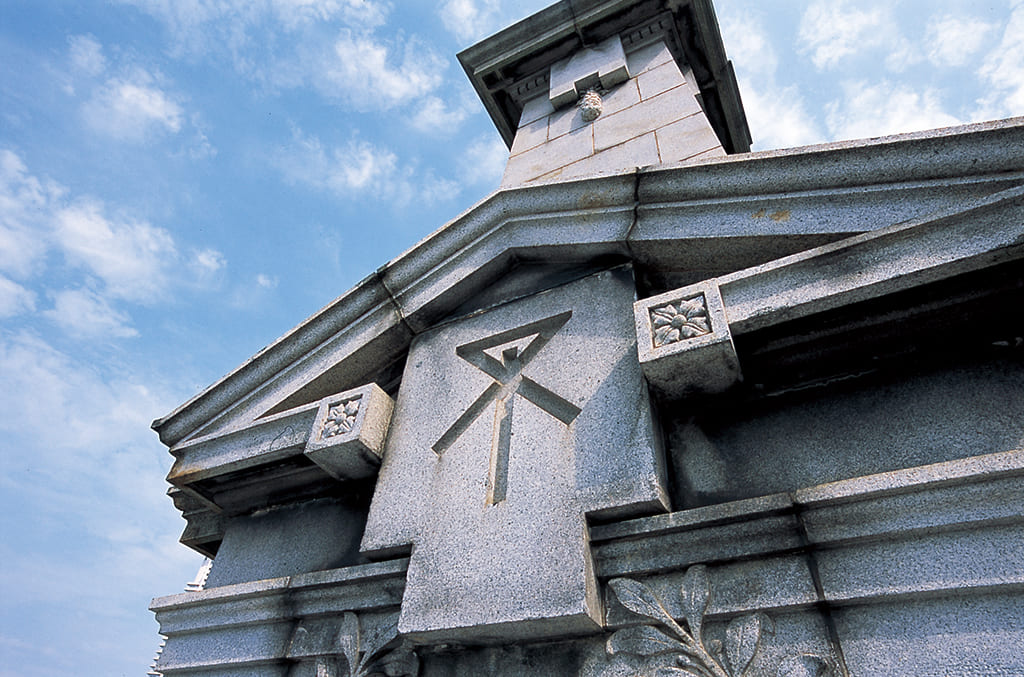
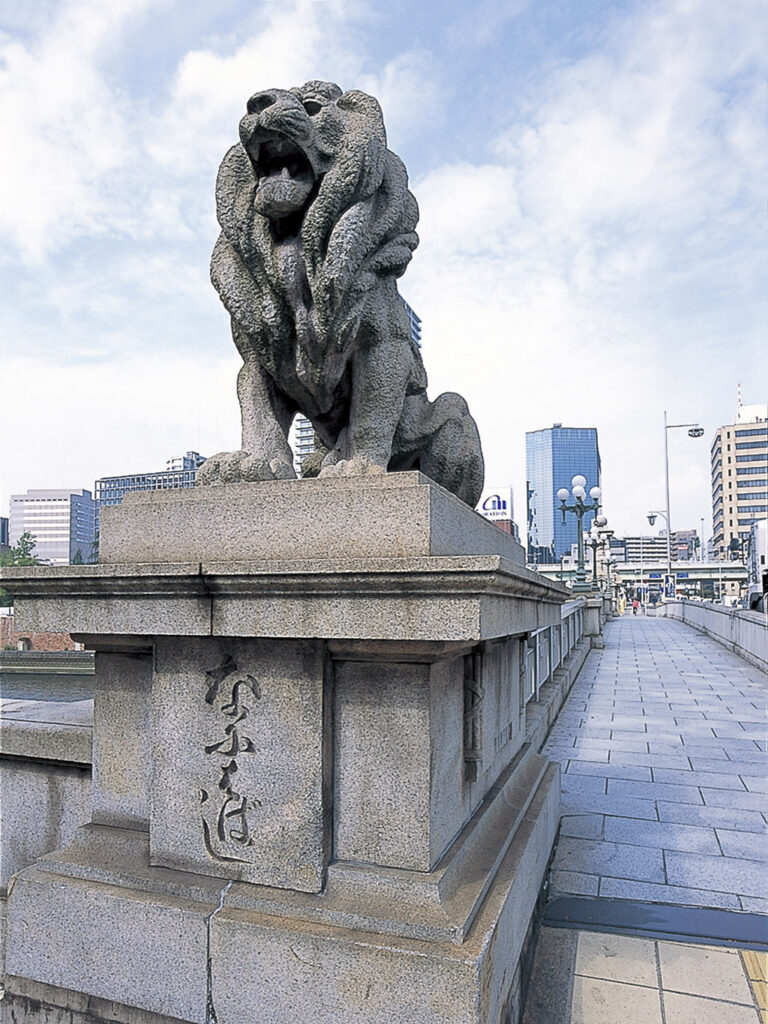
●Nakanoshima Station
RIHGA Royal Hotel Osaka
2nd Basement
Japanese restaurant “Miotsukushi”
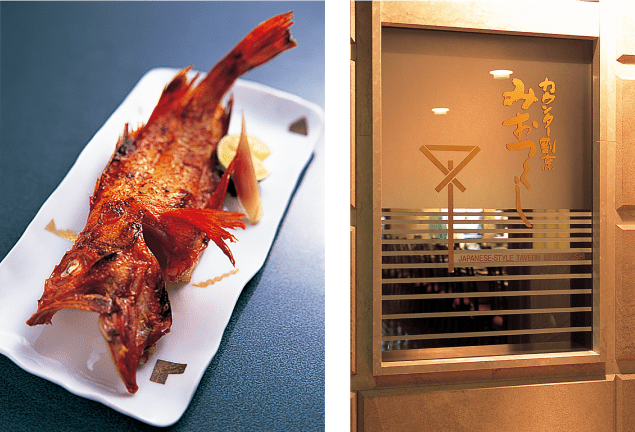
Using only carefully selected seasonal ingredients.
Overnight-dried Kinki (idiot cod) ¥4,043 (left)
With a name that is uniquely Osaka, the restaurant offers Osaka’s unique flavor using local ingredients such as whale meat and Naniwa vegetables. The menu includes a wide variety of dishes, and the standard menu alone offers 70 to 80 different dishes. The chef’s “Miotsukushi” (also means “devotion to one’s craft”) comes from the heart. The restaurant has counter seating for a quick drink and private rooms for business meetings, and they also offer a wide selection of Sake and Shochu.
Phone: +81(0) 6-6441-0978
6. The Counter Seating in the Galaxy
●Nakanoshima Station
(Osaka International Convention Center)
RIHGA Royal Hotel Osaka 30th Floor
Japanese Restaurant & Bar Hoshizora
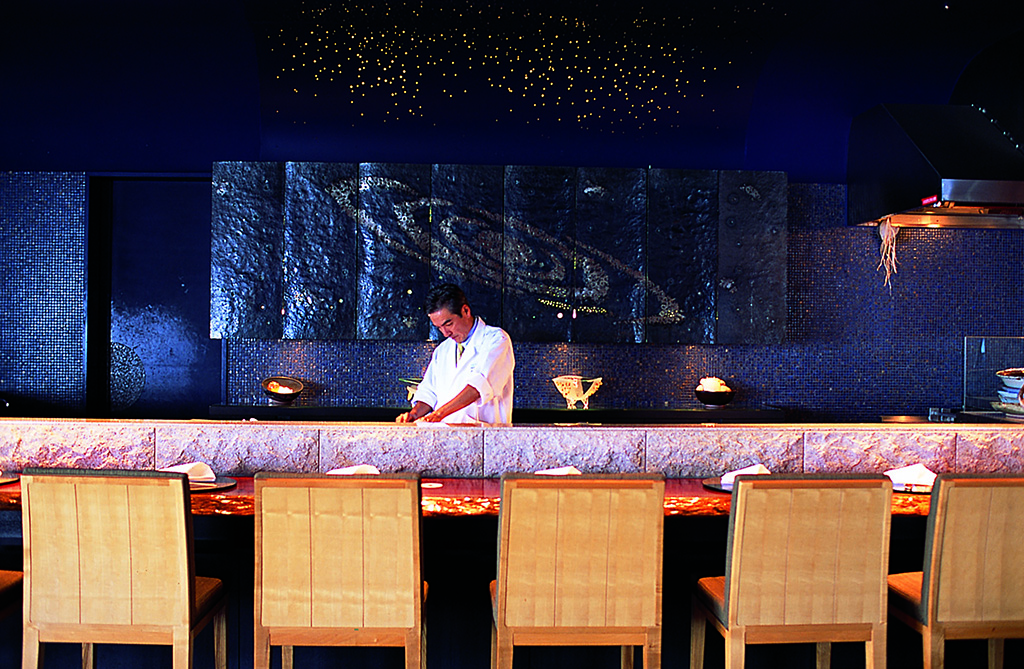
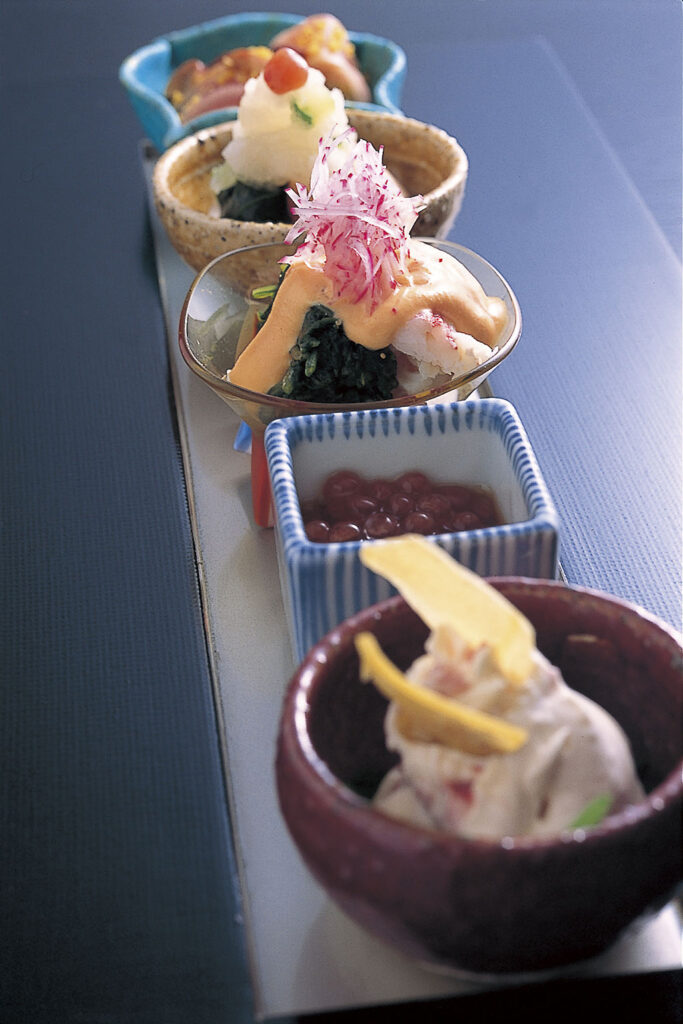
Chef’s handmade plate adds color and splendor.
In recent years, high-rise buildings with fascinating night views have been built one after another in the Nakanoshima area. On the 30th floor of the RIHGA Royal Hotel Osaka, in front of Nakanoshima Station, is a Japanese restaurant & bar that looks as if it is floating in the night sky. Executive Chef Hirano Norimoto’s handmade plates are also pleasing to the eye. Japanese Restaurant & Bar Hoshizora is well-reputed for making guests happy with not only the chef’s exquisite authentic Japanese cuisine but also the gorgeous view of Osaka.
Phone: +81(0) 6-6441-0952
7. The Forest behind the Hotel
●Nakanoshima Station
(Osaka International Convention Center)
RIHGA Royal Hotel Osaka
1st Floor
Dining &Cafe Natural Garden
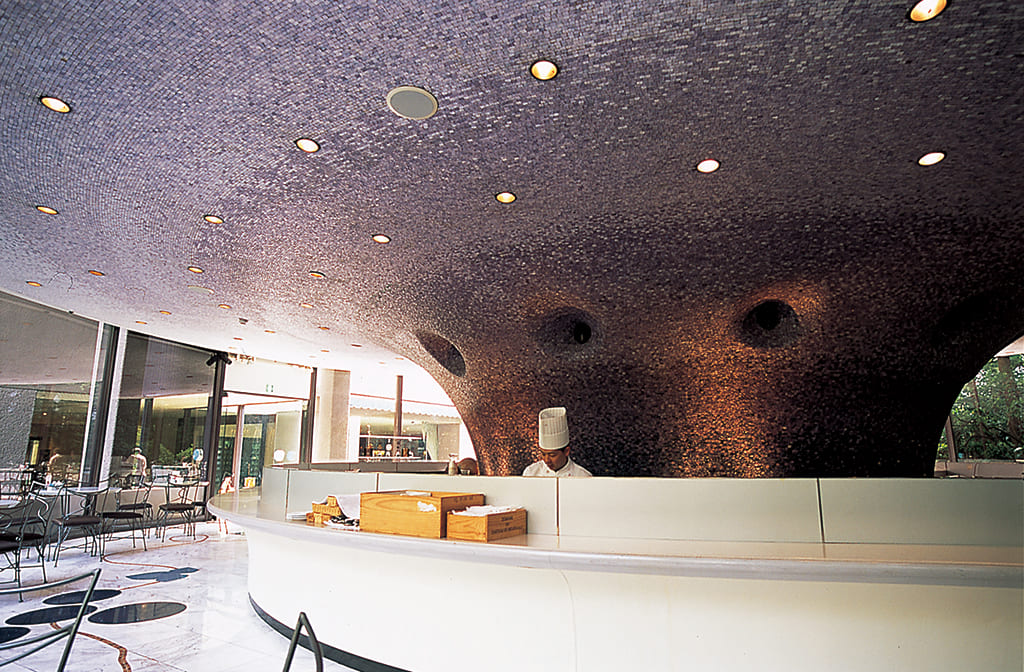
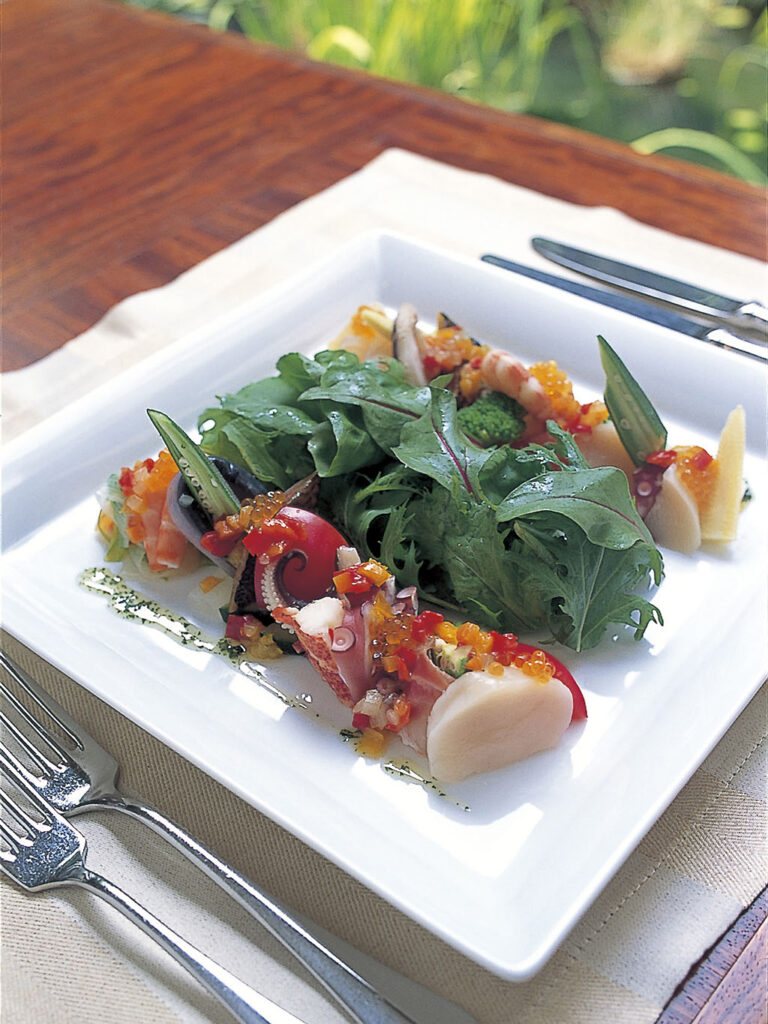
Pictured above is the café area modeled after a stump. Surrounded by glass windows facing a garden and pond, it feels as if you are in a forest. In the adjacent chic modern dining space, you can enjoy Chef Toyoda’s special dish with carefully selected seasonal vegetables. The sauce and vegetables add colors to the plate like a painting, and the greenery outside creates a refreshing atmosphere. Please try their full-course meal and have a relaxing time in “nature.”
8. Master Craftsmen’s Bar
●Nakanoshima Station
(Osaka International Convention Center)
RIHGA Royal Hotel Osaka 1st Floor
Leach Bar
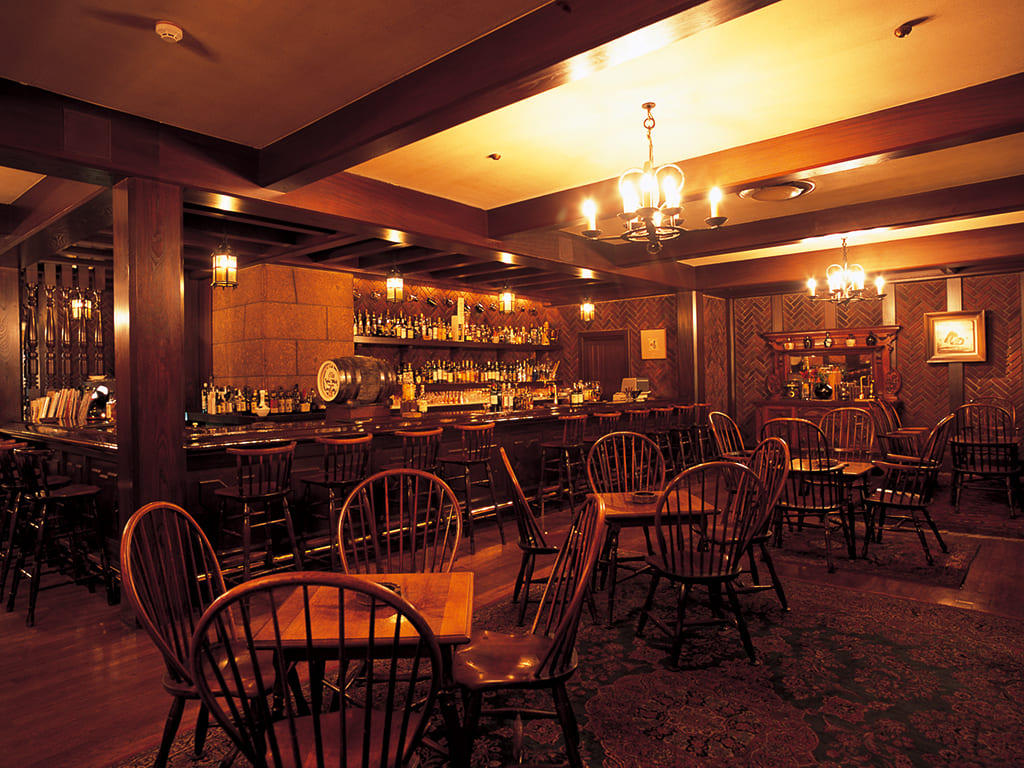
The Leach Bar was created by Yoshida Isoya based on the concept by British potter Bernard Leach. This unique British cottage-style bar features works by famous artists of Japanese folk art, such as Munakata Siko, Kawai Kanjiro, Hamada Shoji, and Serizawa Keisuke, and has been loved by many people.
Phone: +81(0) 6-6441-0983
The Antiques
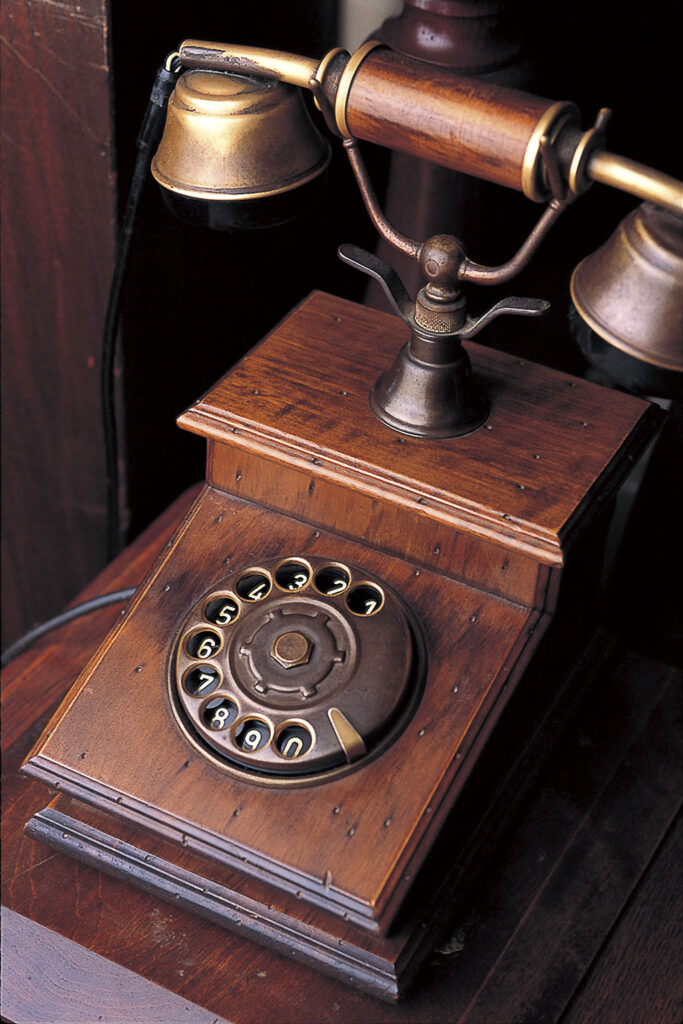
The Copper Plate Menu
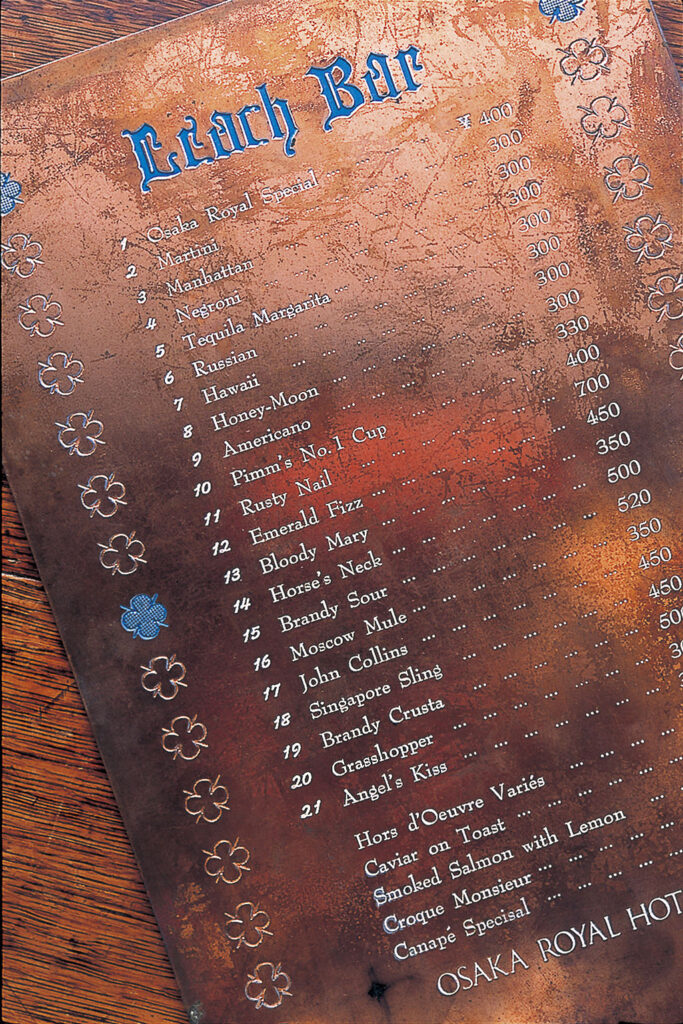
The Handmade Ashtrays
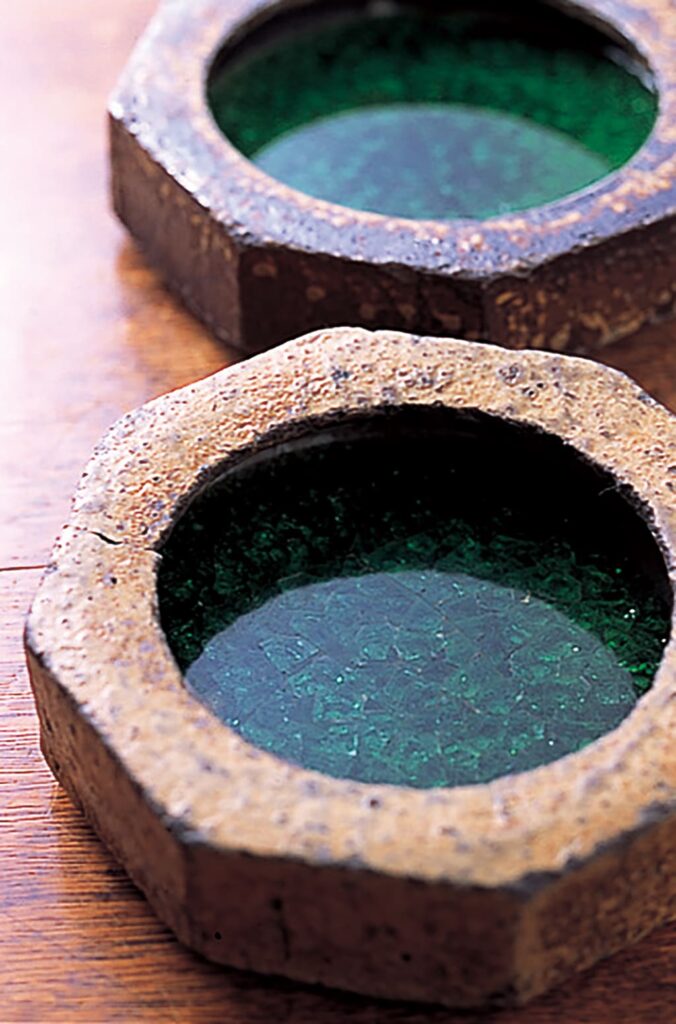
The Walls with Personality
